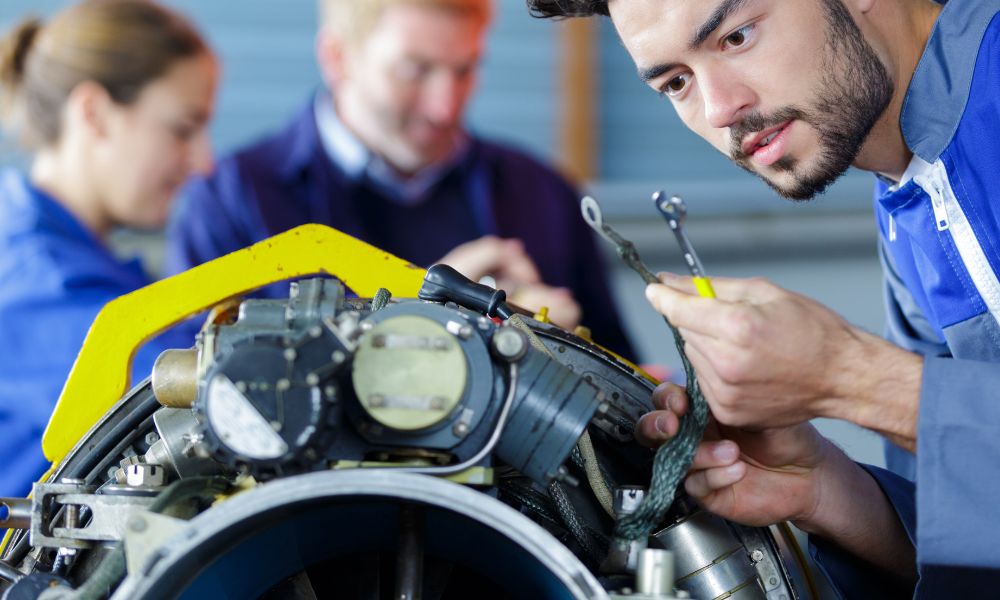Best Practices for Wire Labeling in Aviation

Modern aircraft contain many electrical systems requiring wires and interconnected systems. All aircraft follow certain best practices for label wiring in aviation to ensure standardized safety. Learn about avionics and these wire labeling practices below.
The Basics of Avionics
Wire labeling in aviation is part of avionics. Simply put, avionics are the electronic systems in an aircraft that allow it to fly safely and comfortably. Modern airplanes are so advanced that they’re like flying computers.
Many parts of an aircraft fall under avionics, but the key systems include the following:
- Communications
- Navigation
- Flight control system
- Collision avoidance
- Weather systems
Naturally, all of these systems are integral to the safety of a passenger jet. If the avionics of a passenger jet experience any problems, these systems could malfunction or fail, putting the aircraft and passengers in significant danger.
Avionics & the Electronic Wiring Interconnect Systems Requirement
It may be surprising to hear that the electronic systems of an aircraft were not considered that important to safety for many years. In the 1990s, two passenger jets crashed due to faulty electronic systems. Stricter regulations, including the Electronic Wiring Interconnect Systems (EWIS) requirement, were enforced.
The EWIS is the compliance requirement for practically every electronic component of an aircraft, down to the nuts and bolts. Parts of an airplane that must pass EWIS compliance include the following:
- Wires
- Cables
- Termination points
- Connectors
- Electrical splices
- Wire labels
Electronic wire labeling is mandatory and strictly enforced in avionics.
Avionics Wire Labeling Best Practices
As part of the EWIS mandate, all aircraft manufacturers and owners must follow best practices in aviation wire labeling. Here are some rules regarding avionics wire labeling.
Wire Length
All wires three to seven inches in length should be identified at the center. Wires less than three inches do not need to be identified.
Wire Marking
Wires can be marked directly by printing on the cable’s outer covering with an aircraft wire marking machine or indirectly via printing on a shrinkable sleeve and installing it over the wire covering.
Wire Legibility
All wire markings must be permanent to avoid environmental stress and maintain legibility.
Wire Label Orientation
The identification code printed on the wire should be identified at the center and read horizontally (left to right) or vertically (top to bottom).
Those are just a few standard operating procedures regarding wire labeling, but there are many more in aviation. If you’d like to learn more about wire marking machines or aviation wire labeling, contact our staff at Tri-Star Technologies today.


